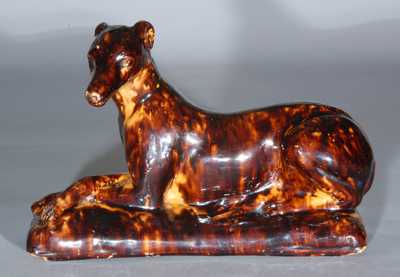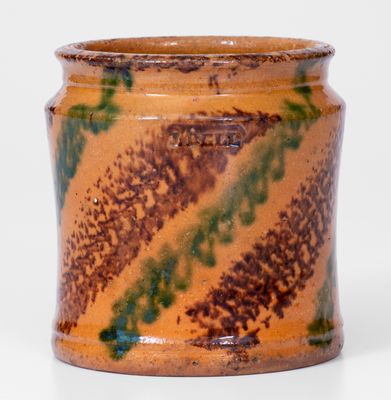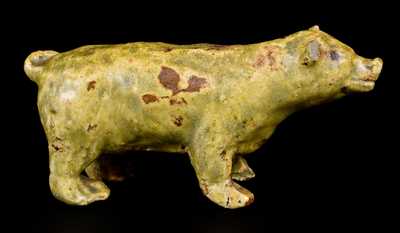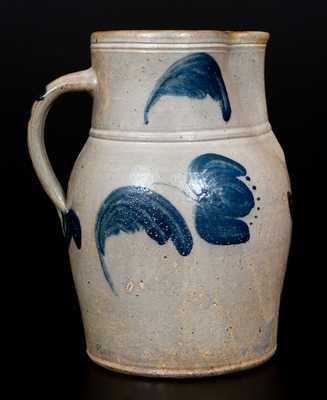Exceedingly Rare and Important Shenandoah Valley Tin-Glazed Redware Jar with Profuse Cobalt Decoration, Stamped "I. BELL", Winchester, VA or possibly Hagerstown, MD origin, circa 1825, finely-potted, ovoid jar with footed base, unusual rounded shoulder molding, and flared rim, the surface covered in a tin slip and decorated with four large cobalt tulips and heavy cobalt sponging to the rim, base, and surrounding the flowers. Clear lead glaze to exterior. Interior with reddish-brown lead-and-manganese glaze. Underside impressed with the raised-face maker's mark of John Bell, which reads "I. Bell", a stamp used while Bell was still operating at the shops of his father, Peter, in Hagerstown, MD and Winchester, VA, circa 1820-1825. The delicate potting and lavish glaze treatment profess the young artisan's capabilities at his craft. Made when Bell was roughly twenty-five years old, the vessel bears one of the potter's two earliest and rarest maker's marks. The glaze treatment and style of stamp are closely-related to the iconic John Bell inkstand, which bears the inscription, "Winchester / March 12th 1825", and raised-face mark, "J. Bell". Regarded as one of Bell's finest works, the inkstand, which currently resides in the collection of the Museum of the Shenandoah Valley, is also believed to be the earliest extant dated example of American tin-glazed pottery. This outstanding jar is certainly one of the finest examples of Bell family pottery we have ever offered. Its aesthetic appeal, coupled with the historical significance of its glaze and rarity of the maker's mark, rank it among the finest works by John Bell to come to auction in the past decade. Provenance: A fresh-to-the-market example, recently found in the Midwestern U.S. A 1" in-the-firing stone ping to underside. Several small chips and wear to rim. A few chips and expect light wear to bottom edge of jar. The glazed surface survives in exemplary condition, particularly when considering the medium (redware), and the jar's date of manufacture, made approximately 190 years ago. H 6".
















